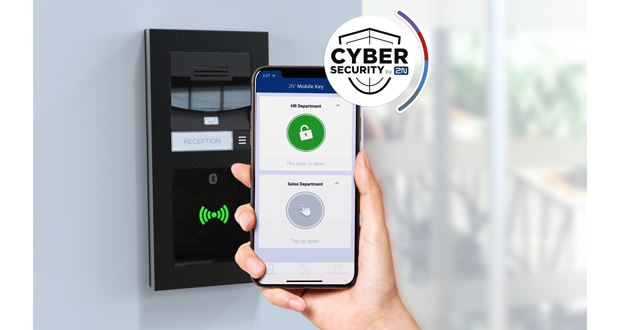Last month, research firm ResearchAndMarkets published a report on the smart home automation market. It forecast that the market will reach $187.8 billion globally by 2028, rising at a compound annual growth rate (CAGR) of 15.2% over that period. Part of this growth will come from home automation systems expanding to incorporate access control technologies, a trend which is starting to become visible in many countries across the world.
In response, and to mark European Cybersecurity Month 2022, 2N, the global leader in IP access control systems, has issued guidance (see below) to help integrators and installers who are considering including access control devices into customers’ home automation systems.
Michael Nicholson, Business Development Manager for the UK & Ireland at 2N, said: “The guidance we are publishing today is designed to be of practical use to installers and integrators. Customers are increasing seeing the value of integrating access control into their home automation systems, but it needs to be done right – and with a particular focus on cybersecurity – if they are to enjoy the full benefits in terms of both security and convenience.”
1. Bear in mind the full range of security benefits available
For many homeowners looking to take their security system to the next level, integrating access control and home automation can give them exactly what they are looking for. For example, imagine that a burglar is prowling around and rings on the intercom to see if anybody is at home. With an IP intercom, you can receive the call on your smartphone. You can see the burglar and talk to him – and, if you want to, pretend that you are at home.
Connecting the intercom to a home automation system means you can go one step further by taking action in real-time – for example, by turning on the lights in your house remotely. In most cases, this will be enough to dissuade him.
2. Consider all of the convenience upgrades that access control can offer
Integrating products like the 2N® Indoor Touch 2.0 answering unit into home automation solutions from companies such as Control4, Savant, RTI and Crestron can turn them into your central control panel, regulating everything from the lights, air-conditioning and music system through to the garage door and lawn irrigation system.
Moreover, connecting IP intercoms into smart home systems can, for example, facilitate package deliveries when the homeowner is out. Using remote door control, they can open the gate to the courier via the app – and even programme the system so that a personalised welcome message plays from the intercom. They can then switch in the app to the stream from an external IP camera to be sure that courier puts the package to the right place.
Or they might want the courier to leave the package in the garage – where it will be safe and out of the rain. Not only can they programme the system to open the garage door, they can do so only partially – maybe 20 percent: enough to slide the package through without the courier needing to enter the garage themselves. If they are still nervous about it, they can set a security camera to be recording this area. Once the courier has dropped off the package, the system can automatically re-lock the garage door.
3. Choose devices based on open standards or vendor specific protocols
In each of the examples above, easy integration is the key, because consumers – quite rightly – have no patience for smart home devices that don’t work well together. Therefore, avoid proprietary, closed systems which can’t be interconnected with different brands, because the buyer then has to seek out a home automation vendor that specialises in custom solutions – which, probably, means buying a whole range of appliances that the vendor is endorsing, thereby increasing the costs.
Instead, prioritise devices which are based on open standards or with an open API, as they can easily be integrated with third party technology.
4. Remote management saves both time and money
Home automation customers typically value the flexibility to add amazing new features to their smart home as soon as they want them. Remote management options like the My2N cloud platform can make a real difference here, enabling integrators to serve their customers more effectively and saving them both time and money in the process.
5. Prioritise the cybersecurity of access control devices
Cybersecurity is, of course, just as important as physical security – and any weak links in a home automation system risks cyber attacks on a smart home. 2N has published a list of seven pieces of best practice when it comes to cybersecurity which integrators and installers should bear in mind when working on all smart home projects, and a Hardening Guide which explains how to configure 2N products in a truly secure way.
-ends-
To have your industry news published in the pages of FMJ’s news section, Month in FM, and here online on fmj.co.uk, please send your news and image to Danny Grange danny.grange@kpmmedia.co.uk
The view or information contained within these unedited press releases, are that of the company producing it and not necessary the views of kpm.





